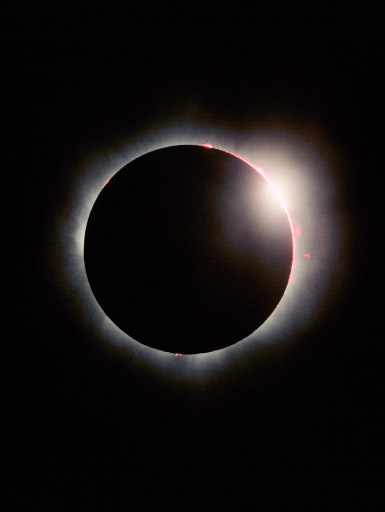

Colors of the Sun
The third contact of the solar eclipse 8/99
| Date: | 11.08.1999
| Time: | 9:32 UT
| Exposure: | 1/30s
|
| Field of View: | 1o x 1.3o
| Emulsion: | Kodachrome 64
| Filter: | none
|
| Instrument: | f=1000mm, 1/10
| Place: | Altroff, France
| Observer: | T. Credner
|
© Copyright by the observers
From Colors to Astrophysics
The third contact of a solar eclipse is the moment of first sunlight emerging
from behind the dark lunar limb and resembling very nicely a diamond ring.
The end of totality is reached. However, this just refers to the
light of the dominating bright solar "photosphere".
Close to the second and third contact the red "chromosphere"
becomes visible for a few seconds. This atmospheric layer shows an emission line
spectrum and emits visible light mainly at the red wavelength of H-alpha (hydrogen).
From the chromosphere the prominences occur, ionized gas that is lofted by strong
magnetic fields above the solar surface.
All around the sun you can see light of the inner solar corona. In this region
of completely ionized gas free electrons are scattering the light of the photosphere.
This so called "Thomson scattering" gives a spectrum (and thus a color) almost identical
to the one of the mean photosphere. However, in the image above you can see a small color
difference between the corona and the direct sun light. It is due to the different spectra
on the solar disc itself. The limb of the sun is red in comparison to the whole
integrated light of the solar disc.
Reference:
A. Unsöld, Physik der Sternatmosphären, Springer Verlag

